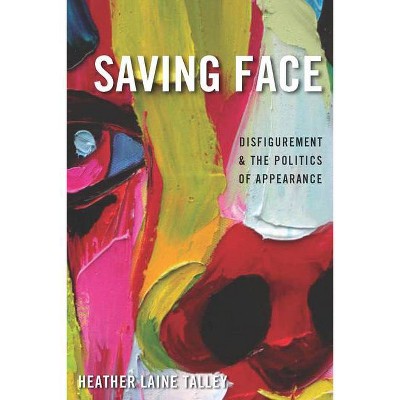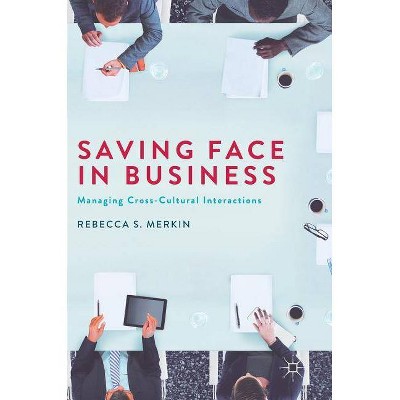Saving Face - by Heather Laine Talley (Paperback)

Similar Products
Products of same category from the store
AllProduct info
<p/><br></br><p><b> Book Synopsis </b></p></br></br><p><em>Winner, Body and Embodiment Award presented by the American Sociological Association</em><br /><br />Imagine yourself without a face--the task seems impossible. The face is a core feature of our physical identity. Our face is how others identify us and how we think of our 'self'. Yet, human faces are also functionally essential as mechanisms for communication and as a means of eating, breathing, and seeing. For these reasons, facial disfigurement can endanger our fundamental notions of self and identity or even be life threatening, at worse. Precisely because it is so difficult to conceal our faces, the disfigured face compromises appearance, status, and, perhaps, our very way of being in the world.</p> <p>In <em>Saving Face</em>, sociologist Heather Laine Talley examines the cultural meaning and social significance of interventions aimed at repairing faces defined as disfigured. Using ethnography, participant-observation, content analysis, interviews, and autoethnography, Talley explores four sites in which a range of faces are "repaired: " face transplantation, facial feminization surgery, the reality show <em>Extreme Makeover</em>, and the international charitable organization Operation Smile. Throughout, she considers how efforts focused on repair sometimes intensify the stigma associated with disfigurement. Drawing upon experiences volunteering at a camp for children with severe burns, Talley also considers alternative interventions and everyday practices that both challenge stigma and help those seen as disfigured negotiate outsider status.</p> <p>Talley delves into the promise and limits of facial surgery, continually examining how we might understand appearance as a facet of privilege and a dimension of inequality. Ultimately, she argues that facial work is not simply a conglomeration of reconstructive techniques aimed at the human face, but rather, that appearance interventions are increasingly treated as lifesaving work. Especially at a time when aesthetic technologies carrying greater risk are emerging and when discrimination based on appearance is rampant, this important book challenges us to think critically about how we see the human face.</p><p/><br></br><p><b> Review Quotes </b></p></br></br><br>Interested in the question of inequality and gender relations, Talleys most compelling chapter is on a dual analysis of surgeons justifications for facial surgery and various studies concerning transsexuality and bodily gendered expectations.-- "Sociology of Health and Illness"<br><br>Saving Face can be read as an intervention into beauty culture and liberal feminism's championing of it, while also striving to shake up contemporary beliefs about ugliness, disfigurement, and the ways in which more and more people are battling 'social death.'-- "PopMatters"<br><br>Saving Face offers a persuasive and sociologically rich portrayal of facial disfigurement. Beauty culture depends more upon the 'normal' and unremarkable - rather than the exceptional - face than is usually acknowledged, and Talley offers a fascinating account of how unremarkability is medically, culturally and socially produced. The ethics and politics of reconstructive surgery are not straightforward; Talley gives the subject an admirably nuanced and sensitive treatment.--Victoria Pitts-Taylor, author of Surgery Junkies: Wellness and Pathology in Cosmetic Culture<br>
Price History
Price Archive shows prices from various stores, lets you see history and find the cheapest. There is no actual sale on the website. For all support, inquiry and suggestion messagescommunication@pricearchive.us




















